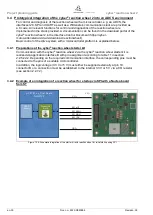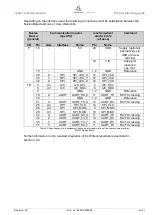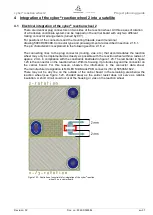
cyber
®
reaction wheel 2
Project planning guide
Revision: 02
Doc. no.: 5022-D060586
en-35
3.4.4 Wittenstein software stack for integration of the reaction wheel
The example project provided in the download portal of the cyber
®
reaction wheel 2 for the
controlling microcontroller consists of the following layers:
The communication interfaces are already described in section 3.4.3.
The example project itself is divided into different layers.
To successfully adapt the sample project to the desired microcontroller and create an application,
some layers must be adapted to the target hardware.
All code points where adjustments are required are marked as follows:
/* BEGIN OF USER CODE … */
/
* END OF USER CODE … */
The documentation for the stack can be found in the "Interface Control Document". (
motor.wittenstein.de/de-de/download-reactionwheel
3.5 Diagnostics using the cyber
®
reaction wheel assistant
In the case of a prototypical integration of the reaction wheel, see section 3.4, parallel diagnostics
with the cyber
®
reaction wheel assistant can be of great use. In this way, the implemented source
code lines in the prototypical ADCS setup can be verified using the oscilloscope, the monitor,
or simply by querying parameters in the assistant.
This can be realized very easily.
Simply follow the steps described in sections 3.3.2 and 3.3.3. This establishes a parallel
connection to the cyber
®
reaction wheel assistant. In this structure the cyber
®
reaction wheel
assistant is only intended for diagnosis. Theoretically, setpoints can be written for active control of
the reaction wheel. However, this may result in unwanted behavior.
•
Parallel operation can cause a CPU load warning. This can be ignored in this case. This can
be recognized by the
Warning
flashing in red in the bottom of the cyber
®
reaction wheel
assistant.
Application
example
Communication
interfaces





































